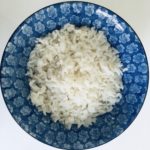Wheat allergy:
A wheat allergy is an immune reaction to wheat proteins. Wheat contains four classes of proteins: Gliadins, Glutenins, Albumins and Globulins. People with a wheat allergy can react to any of these proteins. Wheat allergy is different than celiac disease.
Symptoms of wheat allergy:
The symptoms of wheat allergy can be divided into 3 categories:
- Gastrointestinal – bloating, abdominal pain, vomiting, nausea, gas, diarrhea
- Respiratory – runny or stuffy nose, itchy, watery eyes, sneezing, asthma with coughing and wheezing
- Skin – hives, eczema, swelling of tissue
- Anaphylaxis is the most severe allergic reaction, involving every above organ system. It can lead to anaphylactic shock and death.
The wheat-free diet:
Following a wheat-free diet requires the elimination of the following types of foods:
- Wheat, or anything with the word “wheat” in it (except buckwheat
- Wheat flour or anything with the word “flour” by itself, found in most baked good and cereals
- All forms of wheat, including durum, farina, bulgur, matzoh, cous-cous, semolina, emmer, eikorn, farro, and graham
- Close relatives of wheat: spelt, kamut and triticale
- All foods and beverages containing derivatives of wheat
- For a more detailed list, read the wheat-free guide
Nutritional needs:
Wheat provides thiamin, riboflavin, niacin, iron, selenium and chromium. It also supplies magnesium, folate and phosphorus, but many of these are added to wheat flours and cereals as “enriched†products. Other sources of these nutrients are: oats (if uncontaminated by wheat), rice, corn, buckwheat, quinoa, amaranth, teff, tapioca, millet, bean flours, nut flours and soy.






what people are talking about